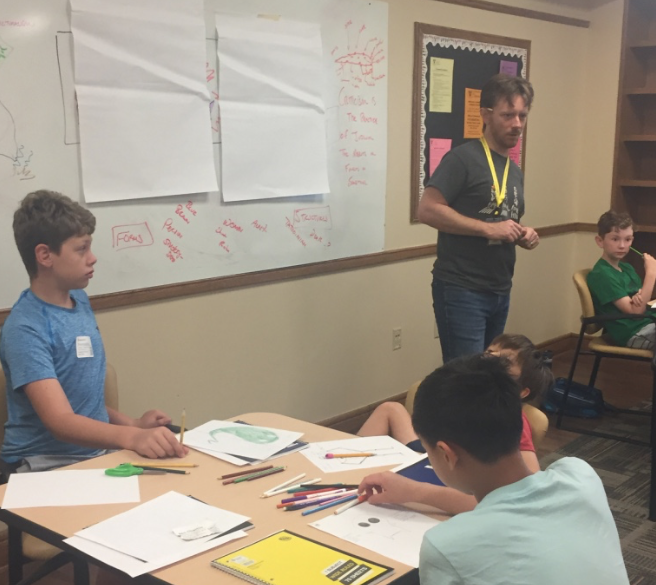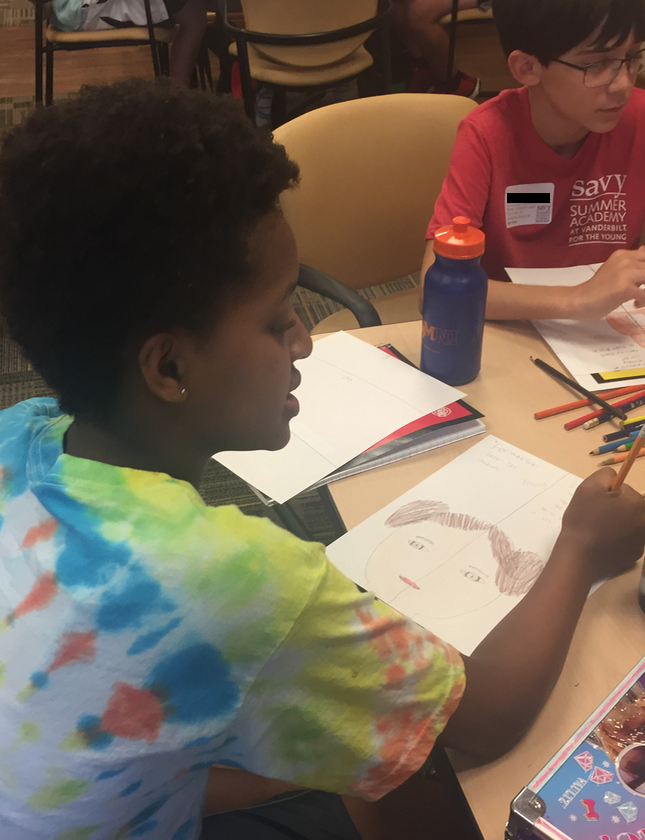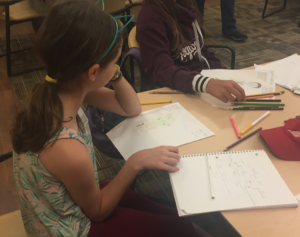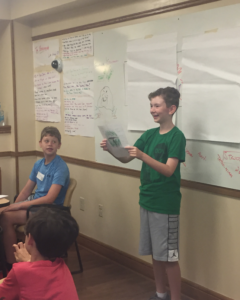Summer SAVY 2018: Session 6, Day 2 – Theory, Criticism, and The Force (Rising 5th/6th)
We began with a quick review of some major concepts: criticism, formalism, and structuralism. In order to recognize some distinctions between formalism and structuralism, we turned to Plato and his Forms. We used the metaphor of a cookie with M&M’s scattered throughout: some M&M’s are on the top, some in the middle, and some are hidden close the bottom. In this metaphor, the cookie is human consciousness, while the M&M’s are like Forms. This is a helpful way of thinking of the iconic elements that a formalist might seek to critique, as well as a fine pitch for any structuralist looking to knock formalism out of the park: “What are you talking about, with your ridiculous eternal ‘Forms’? Until you combine all the ingredients and follow a recipe (meaning: allow for a structure) there can’t be a cookie!”
To further cement our grasp of formalism and structuralism, students drew characters from Star Wars on a piece of paper. On one half of the paper students wrote down things they knew about their character utilizing a formalist perspective, and on the other side they identified characteristics from a structuralist perspective. Students shared their drawings with the class and defended their different lenses.
Students constructed three-part stories in Aristotelian form: according to Aristotle’s Poetics, stories require a beginning, middle, and end. We compared story structure to a building’s structure; just like a building has a recognizable structure, so must a story. Students picked one of the infinite small stories within the larger structure of Star Wars to separate into its beginning, middle, and end.
Poetics further provided us with three elements required for a successful story: plot, character, and theme. We dispelled some myths about protagonists and antagonists and decided we would eliminate hero/villain and good guy/bad guy from our class vocabulary! The Greek root word of protagonist and antagonist “agon” means debate, which highlights the oppositional nature of the antagonist and the protagonist.
We discussed distinctions between theme and motif (ask your student to tell you the difference), and then utilized the work of two additional theorists to unpack and analyze the story structure of Star Wars: from Joseph Campbell we discussed the triptych of Departure, Initiation, and Return, and from Blake Snyder we covered the concepts of Thesis, Antithesis, and Synthesis. Your students worked in groups and independently to analyze and critique the structure of the film, utilizing a number of tools and techniques – no easy task!
And, along the way, we finished watching the film that started it all. We will be revisiting sequences of the film in the days to come, as we move past structuralism and into the wilds of post-structuralist thought. It was a fun day, to be certain, and I look forward to the work ahead!
David Lee
Pictures From Our Structuralism and Formalism Character Work



